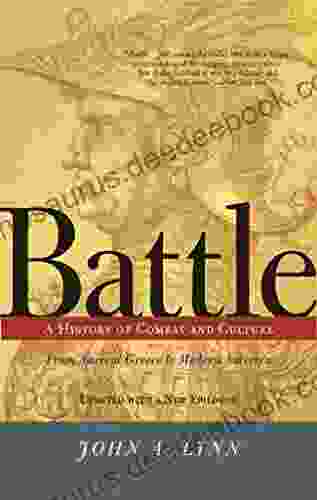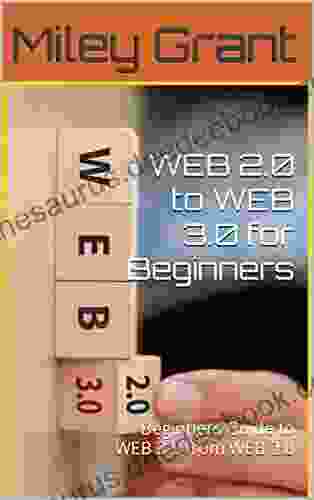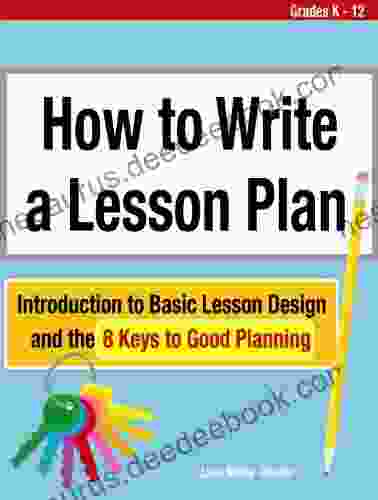How to Write Lesson Plans: A Comprehensive Guide

4.3 out of 5
| Language | : | English |
| File size | : | 218 KB |
| Text-to-Speech | : | Enabled |
| Enhanced typesetting | : | Enabled |
| Word Wise | : | Enabled |
| Print length | : | 43 pages |
| Lending | : | Enabled |
| X-Ray for textbooks | : | Enabled |
| Screen Reader | : | Supported |
Lesson planning is the cornerstone of effective teaching. A well-written lesson plan provides a clear roadmap for teachers, ensuring that students are actively engaged in meaningful learning experiences. Yet, for many educators, crafting effective lesson plans can be a daunting task. This comprehensive guide will provide you with a step-by-step framework, practical tips, and strategies for creating lesson plans that ignite student interest and foster deep understanding.
Essential Elements of a Lesson Plan
Before diving into the process of writing a lesson plan, let's explore the essential elements that make up an effective lesson:
- Learning Goals: The overarching objectives or learning targets that students are expected to achieve by the end of the lesson.
- Materials: All the necessary resources, such as textbooks, worksheets, videos, or manipulatives, that will be used during the lesson.
- : A brief section that hooks students' attention, introduces the topic, and sets the stage for learning.
- Procedures: A step-by-step breakdown of how the lesson will be conducted, including activities, discussions, and assessments.
- Differentiation: Strategies to meet the diverse needs of learners, such as modifications, accommodations, or enrichment activities.
- Assessment: The methods used to evaluate student learning and provide feedback.
- Reflection: A section where teachers reflect on the effectiveness of the lesson and identify areas for improvement.
Step-by-Step Guide to Writing Lesson Plans
Now that you're familiar with the essential elements, let's walk through the step-by-step process of writing a lesson plan:
- Start with the Learning Goals: Clearly define the learning objectives for the lesson. These goals should be specific, measurable, attainable, relevant, and time-bound.
- Gather Materials: Determine all the resources you will need to support the learning process, including textbooks, worksheets, videos, or any necessary manipulatives.
- Craft an Engaging : Begin the lesson with an activity or hook that captures students' attention and piques their curiosity about the topic.
- Outline the Procedures: Detail the sequence of activities, discussions, and assessments that will take place during the lesson. Be sure to include clear instructions and time allocations for each activity.
- Provide Opportunities for Differentiation: Plan activities that cater to the diverse learning styles and abilities of your students. Include modifications, accommodations, or enrichment activities to ensure all learners are engaged and challenged.
- Incorporate Assessment: Identify the methods you will use to assess student learning throughout the lesson. This may include informal observations, quizzes, or summative assessments.
- Conclude with a Reflection: After teaching the lesson, take time to reflect on its effectiveness. Consider what worked well, what could be improved, and any modifications you might make for future implementation.
Tips for Writing Effective Lesson Plans
Here are some additional tips to enhance your lesson planning skills:
- Align with Standards: Ensure that your lesson plans are aligned with relevant educational standards and curriculum guidelines.
- Sequence Learning: Plan lessons in a logical sequence that builds upon prior knowledge and skills.
- Use Variety: Incorporate a mix of activities, such as discussions, hands-on experiments, group projects, or simulations, to keep students engaged.
- Encourage Active Participation: Provide ample opportunities for students to participate in discussions, ask questions, and share their ideas.
- Provide Feedback: Regularly provide students with constructive feedback to help them track their progress and improve their learning.
Lesson planning is a fundamental aspect of effective teaching. By following the steps outlined in this guide, you can create well-structured lesson plans that engage students, promote deep understanding, and support their academic growth. Remember to reflect on your lessons and seek opportunities to enhance your practice over time. With dedication and continuous improvement, you can become a master lesson planner and empower your students to reach their full potential.
4.3 out of 5
| Language | : | English |
| File size | : | 218 KB |
| Text-to-Speech | : | Enabled |
| Enhanced typesetting | : | Enabled |
| Word Wise | : | Enabled |
| Print length | : | 43 pages |
| Lending | : | Enabled |
| X-Ray for textbooks | : | Enabled |
| Screen Reader | : | Supported |
Do you want to contribute by writing guest posts on this blog?
Please contact us and send us a resume of previous articles that you have written.
 Book
Book Novel
Novel Text
Text Genre
Genre Newspaper
Newspaper Paragraph
Paragraph Sentence
Sentence Glossary
Glossary Bibliography
Bibliography Foreword
Foreword Preface
Preface Footnote
Footnote Manuscript
Manuscript Scroll
Scroll Codex
Codex Bestseller
Bestseller Classics
Classics Library card
Library card Narrative
Narrative Biography
Biography Autobiography
Autobiography Memoir
Memoir Thesaurus
Thesaurus Character
Character Librarian
Librarian Catalog
Catalog Borrowing
Borrowing Research
Research Lending
Lending Journals
Journals Reading Room
Reading Room Rare Books
Rare Books Special Collections
Special Collections Interlibrary
Interlibrary Study Group
Study Group Thesis
Thesis Storytelling
Storytelling Awards
Awards Reading List
Reading List Textbooks
Textbooks Richard Templar
Richard Templar Sylvia Kenig
Sylvia Kenig Jim Host
Jim Host Rakesh Dandu
Rakesh Dandu Lily Zheng
Lily Zheng Michael Poore
Michael Poore John Saunders
John Saunders Carole Hopson
Carole Hopson Dan Wells
Dan Wells Maxine Rosenthal
Maxine Rosenthal Ken Matthews
Ken Matthews Janet Edwards
Janet Edwards Philip Toshio Sudo
Philip Toshio Sudo Kate Dopirak
Kate Dopirak National Geographic Kids
National Geographic Kids Fabio Parasecoli
Fabio Parasecoli Nikki Usher
Nikki Usher J Paul Dittmann
J Paul Dittmann Odette Stone
Odette Stone Project Management Institute
Project Management Institute
Light bulbAdvertise smarter! Our strategic ad space ensures maximum exposure. Reserve your spot today!

 Chuck MitchellThe Battle History of Combat and Culture: An Immersive Exploration into the...
Chuck MitchellThe Battle History of Combat and Culture: An Immersive Exploration into the...
 Gabriel BlairOne Page Communication and Conflict Resolution System for Couples, Parents,...
Gabriel BlairOne Page Communication and Conflict Resolution System for Couples, Parents,... David MitchellFollow ·17.7k
David MitchellFollow ·17.7k Jamal BlairFollow ·7.3k
Jamal BlairFollow ·7.3k Dylan MitchellFollow ·17.3k
Dylan MitchellFollow ·17.3k Junichiro TanizakiFollow ·19.5k
Junichiro TanizakiFollow ·19.5k George HayesFollow ·9.5k
George HayesFollow ·9.5k Deion SimmonsFollow ·13.7k
Deion SimmonsFollow ·13.7k Mark MitchellFollow ·11.9k
Mark MitchellFollow ·11.9k David PetersonFollow ·8.1k
David PetersonFollow ·8.1k

 Gary Reed
Gary ReedWeb to Web for Beginners: A Comprehensive Guide to...
In today's interconnected world, websites...

 Elliott Carter
Elliott CarterThe Moon Is Down: John Steinbeck's Poignant Portrait of...
In the annals of literature, John...

 Dalton Foster
Dalton FosterMark The Mechanic: The Incredible Story Of A Young...
In the vibrant realm of robotics, where...

 Fred Foster
Fred FosteriPhone 13 Pro Max User Guide: Everything You Need to Know
The iPhone 13 Pro Max...

 Rodney Parker
Rodney ParkerPope John Paul II: The Pocket Giant Who Inspired Millions
Pope John Paul II, or...
4.3 out of 5
| Language | : | English |
| File size | : | 218 KB |
| Text-to-Speech | : | Enabled |
| Enhanced typesetting | : | Enabled |
| Word Wise | : | Enabled |
| Print length | : | 43 pages |
| Lending | : | Enabled |
| X-Ray for textbooks | : | Enabled |
| Screen Reader | : | Supported |








